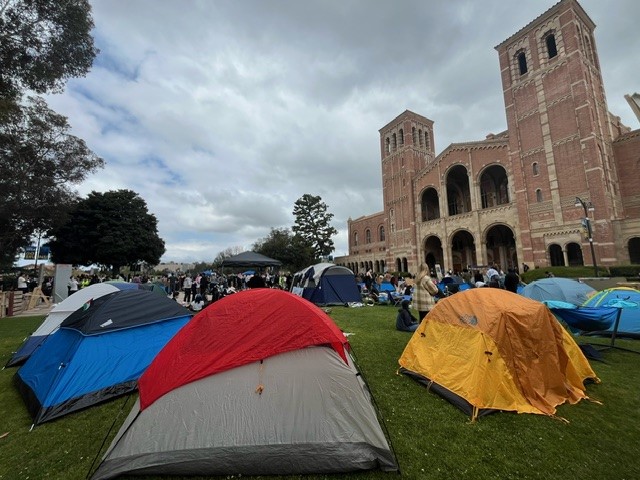In an unprecedented action, statewide restrictions on outdoor water uses have been approved by California's Water Resources Control Board in response to the drought approaching its fourth year.
- Download: Download the NBCLA app
The decision came after hours of public comment and late afternoon revisions worked out with staff. The language must still be submitted to the Office of Administrative Law for a review that could take up to 10 days.
The regulations would forbid:
- Hosing off hardscape
- Hose washing a vehicle without a shut-off nozzle
- Irrigation runoff
- Fountains that do not recycle.
Violations would be punishable by a fine up to $500. Enforcement would be left to local agencies. The regulations are expected to take effect by the beginning of next month.
"We're in an emergency situation," said Felicia Marcus, board chair.
- Running Dry: California Drought Coverage
The new regulations would also require every water district to implement its water shortage contingency plan. Several dozen districts that do not already have such a plan would be given 30 days to limit outdoor irrigation to two days per week.
Restrictions on outdoor water waste have already been imposed by some water districts, including the Los Angeles Department of Water and Power. Water conservation measures adoped in Los Angeles six years ago during the last drought have never been lifted.
The Los Angeles ordinance authorizes residential fines up to $300 for water waste, but no fines have been imposed the past year. The DWP prefers to use education and persuasion to prevent repeat violations, according to Michelle Vargas, a DWP spokeswoman.
The board action comes six months after Gov. Jerry Brown proclaimed a drought emergency and requested a voluntary cutback in water use of 20 percent.
Few areas have been able to cut back that much. In fact, a report presented at the Water Board meeting found that overall water use in California increased 1 percent in May. The report also found water use varied widely in different areas of the state. Usage increased most notably in Southern California coastal communities and the northeastern part of the state.
In the past six years, DWP customers have reduced per capita water use by 17 percent. But this past year, it creeped back up 5 percent, Vargas said.
Storage in reservoirs has largely spared Southern California from direct effects of the drought. There has been more impact north of the Tehachapi Mountains, particularly on agriculture in the southern end of the San Joaquin Valley.
- Images: California's Drought in Pictures
The drought has cost the agriculture industry $1.5 billion, representing a net revenue loss of 3 percent, according to a newly released study by UC Davis. The study found that a greater
impact was avoided by drawing on groundwater reserves, but warned that this is not an unlimited resource and at some point must be replenished.
News
Top news of the day
"I think for this year the state is being about aggressive enough," said Jay Lund, Director of the UC Davis Center for Watershed Studies. "Next year, if the drought continues - and it's a fair chance it will continue - then we'll have to become much more aggressive. I think it's important to sort of stage conservation as things get worse."
Among future steps anticipated by the Water Board is requiring districts to repair leaks in pipes, estimated to drain 10 percent of the water that passes through them, and even more in some older, less well maintained systems.



